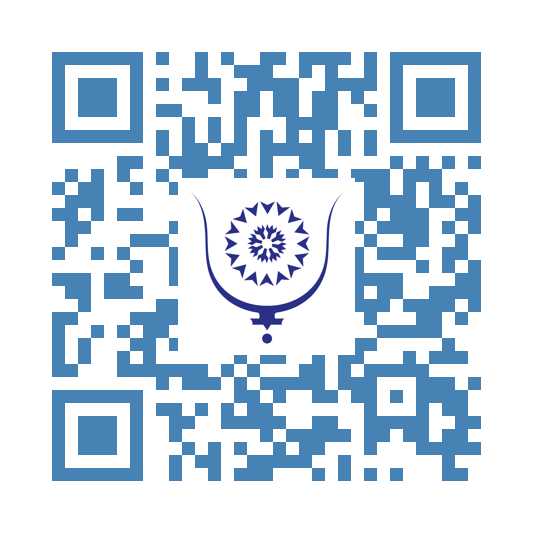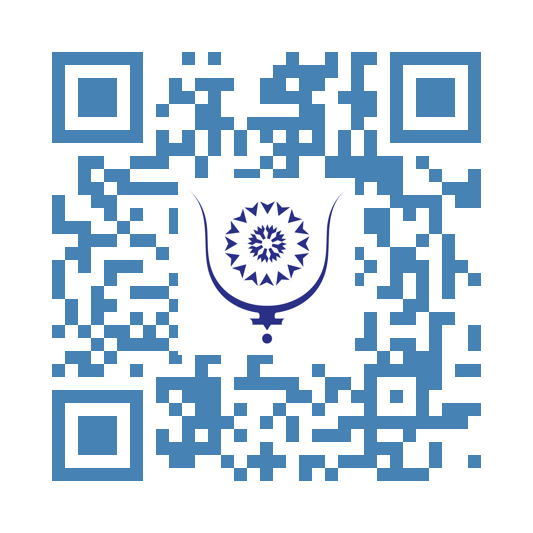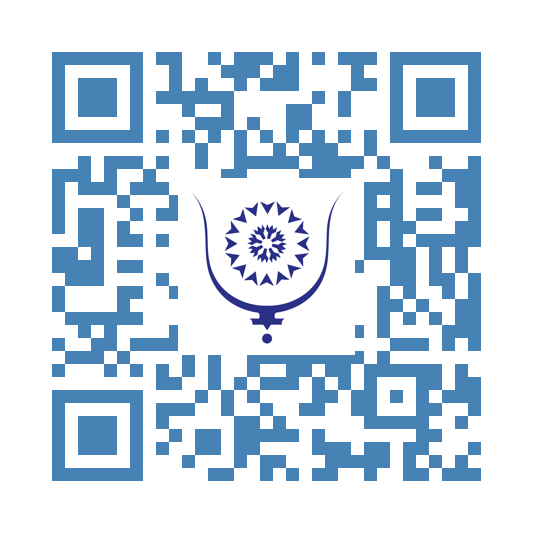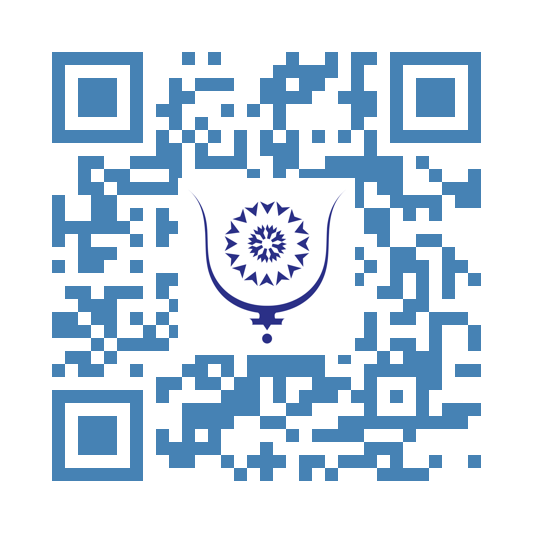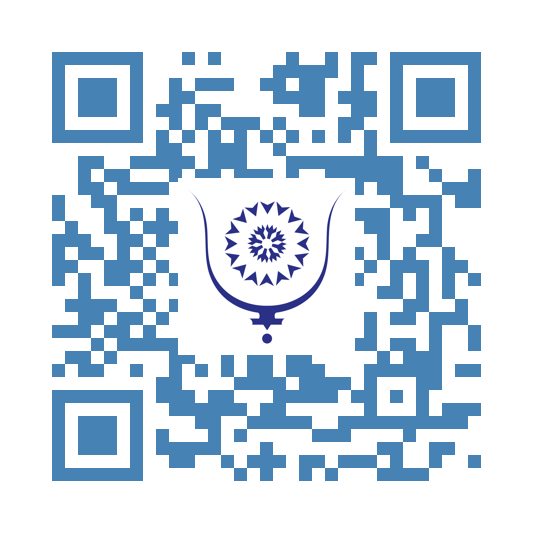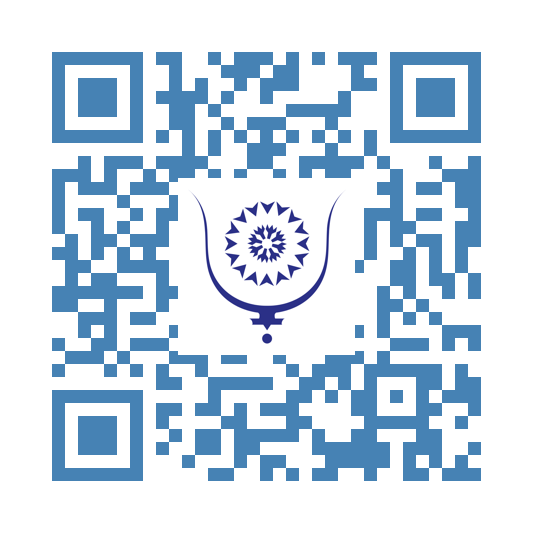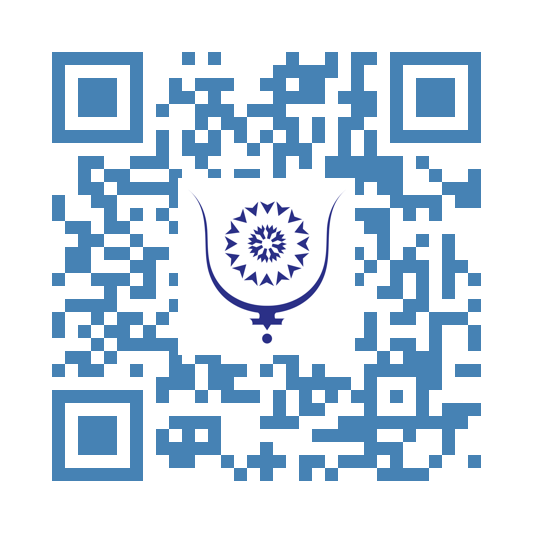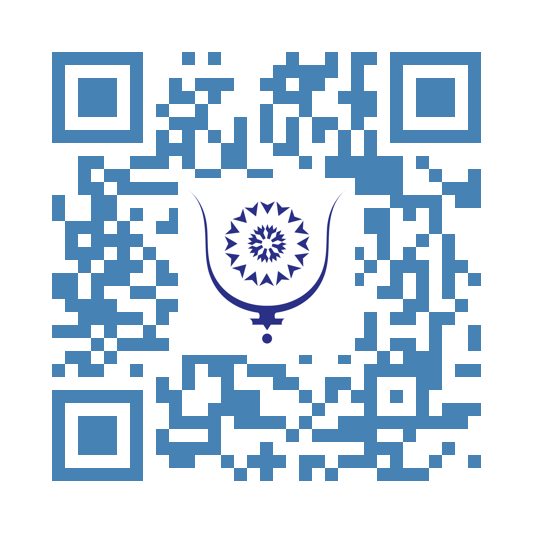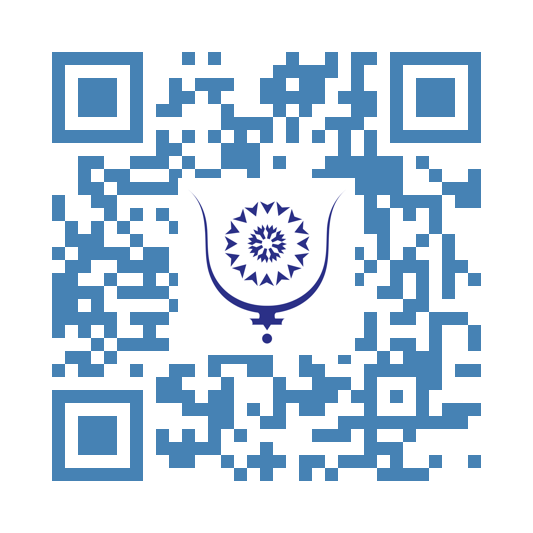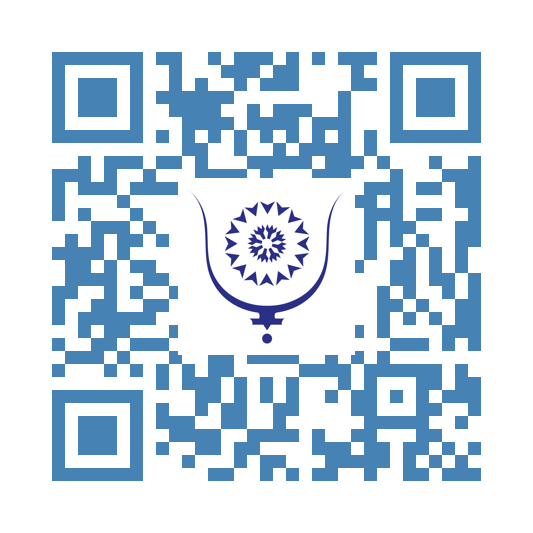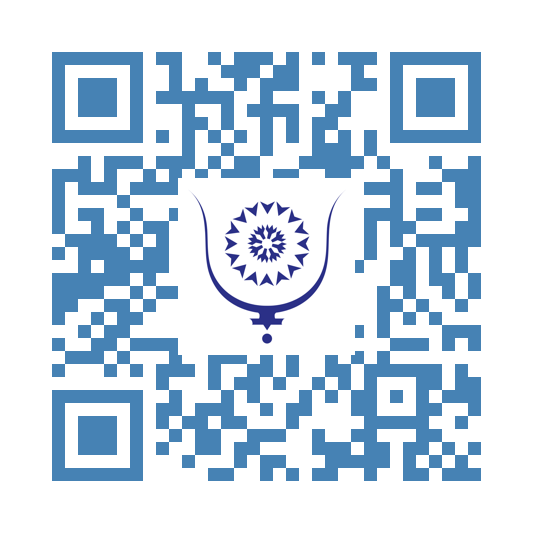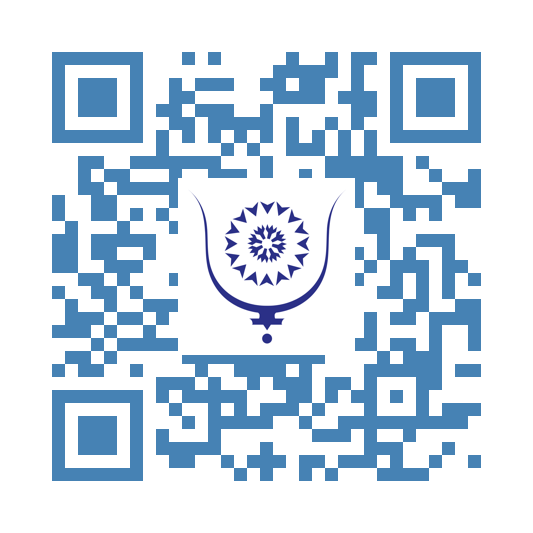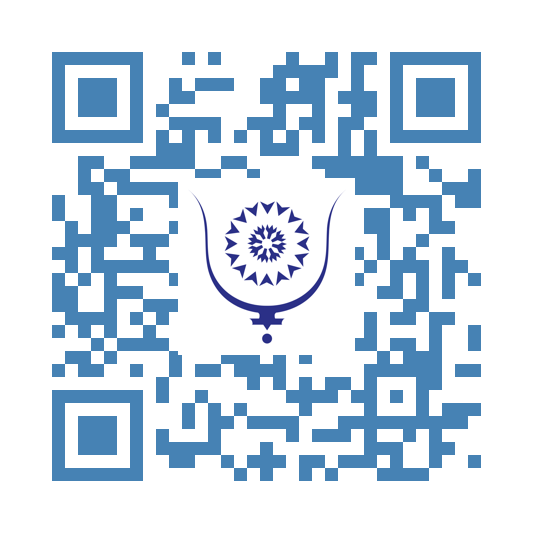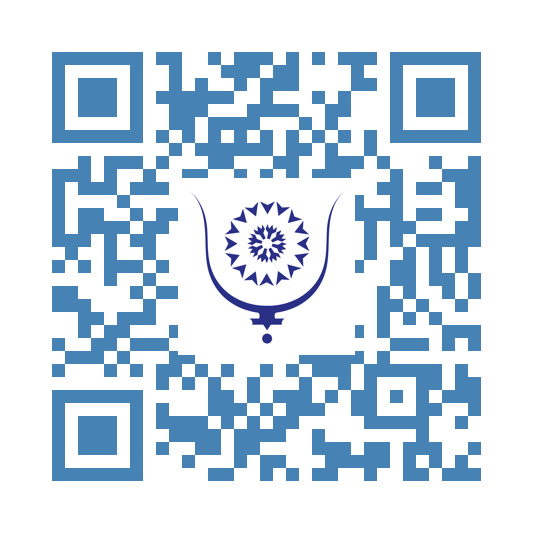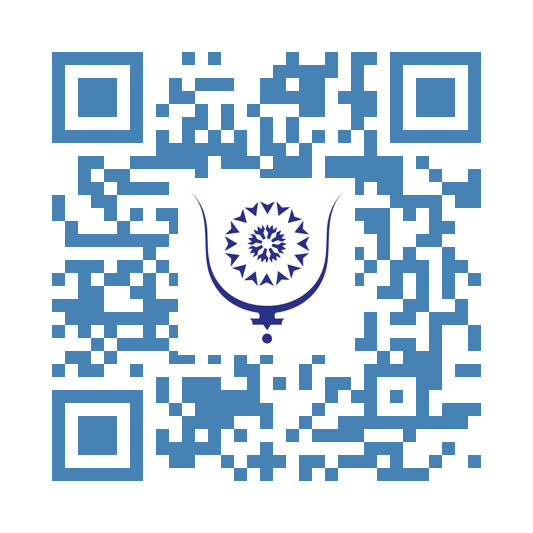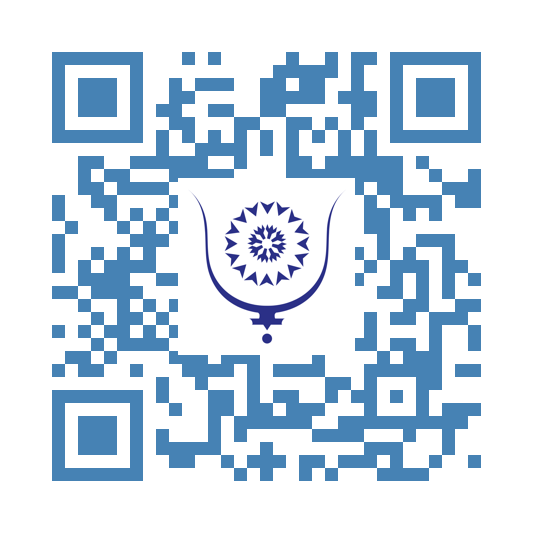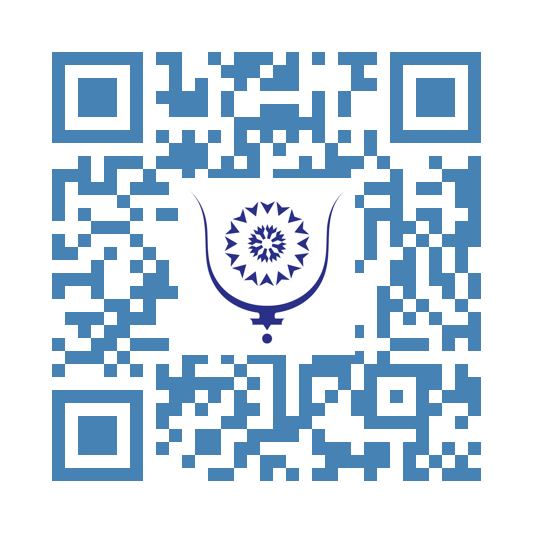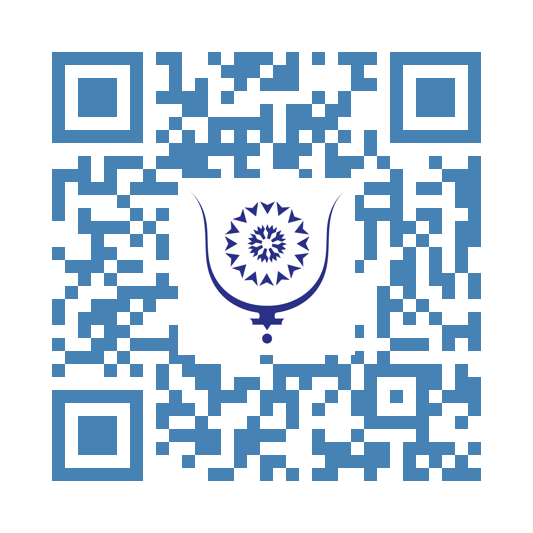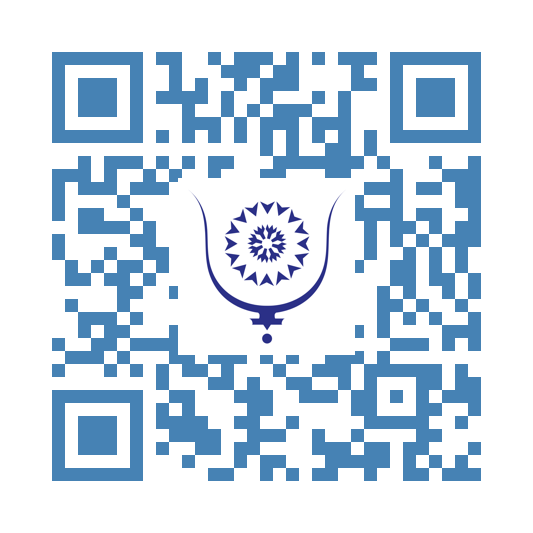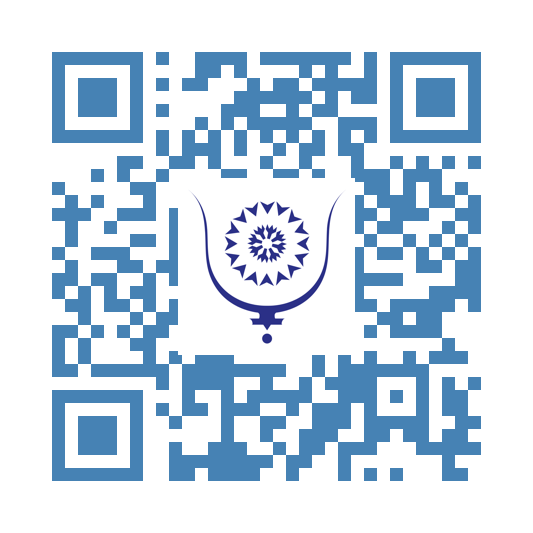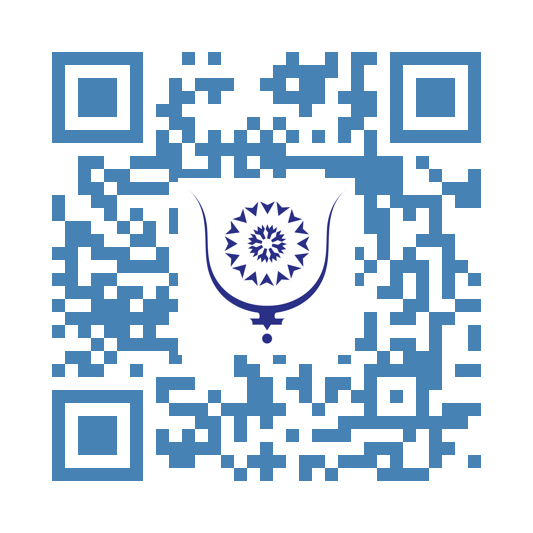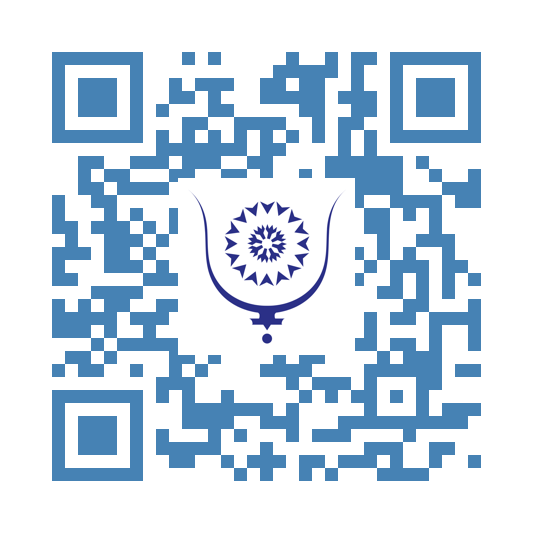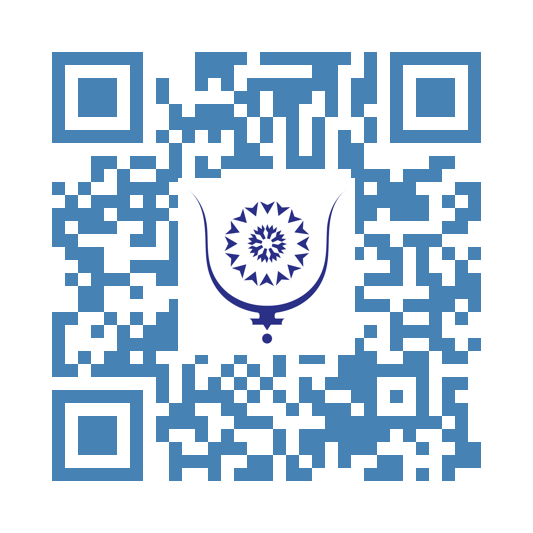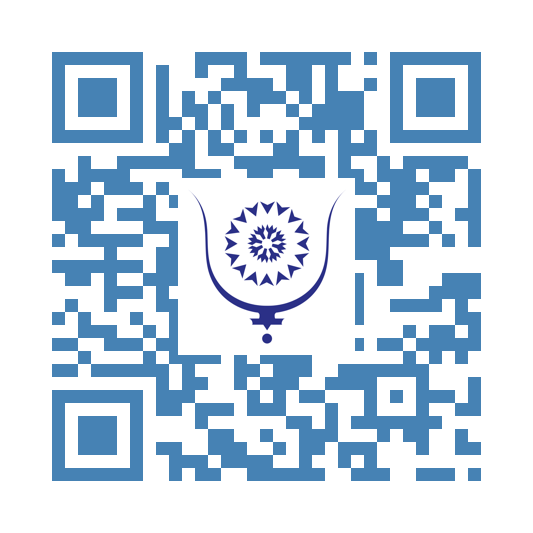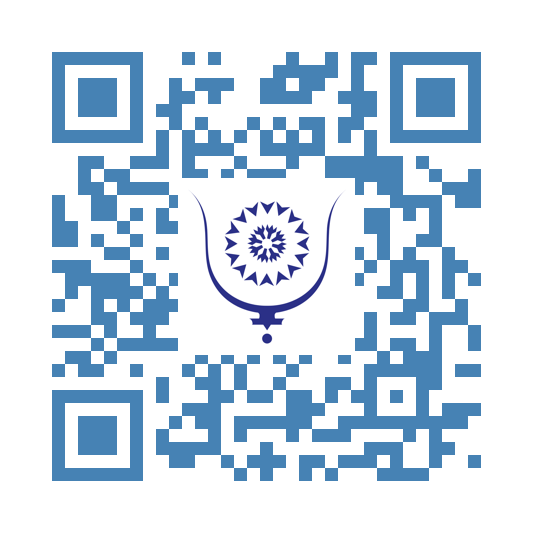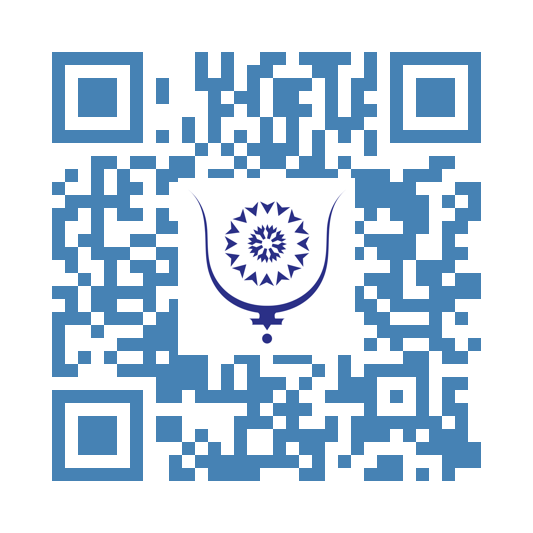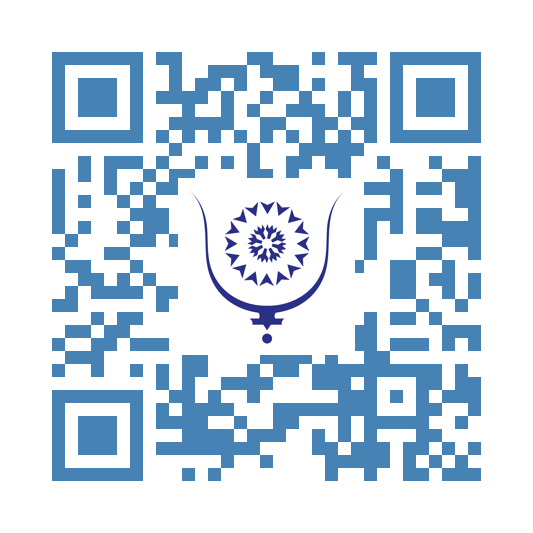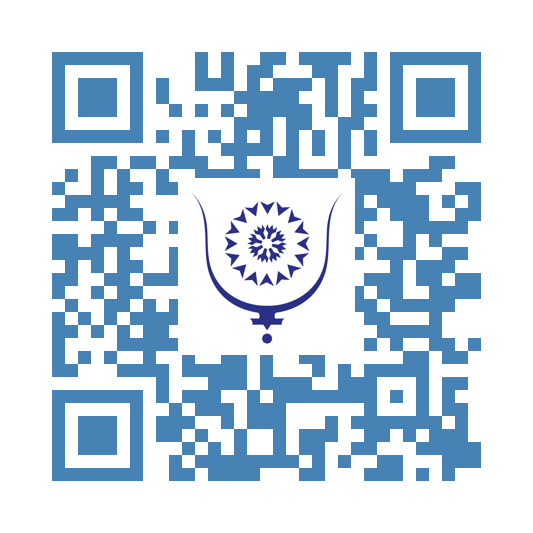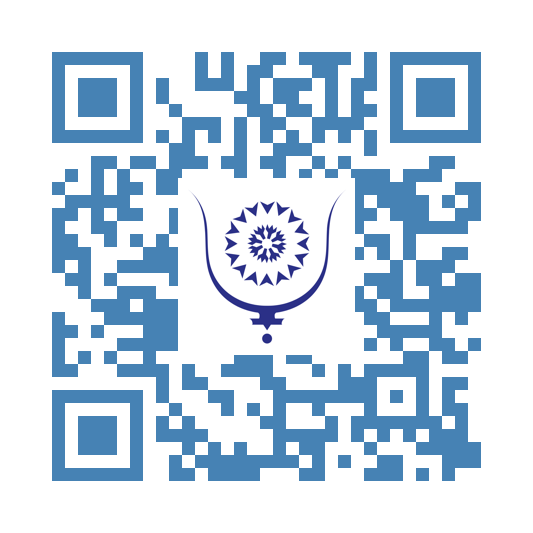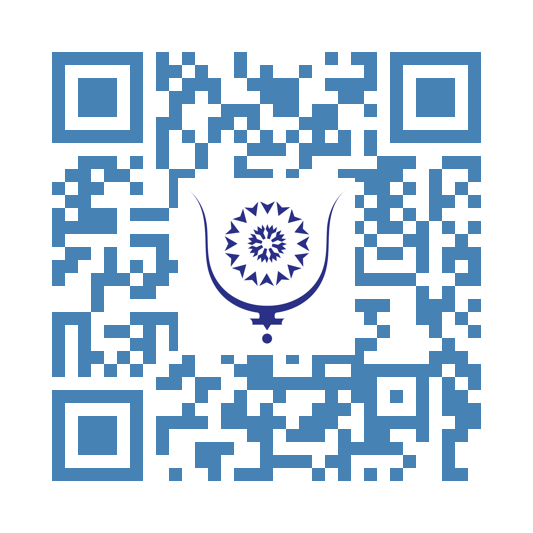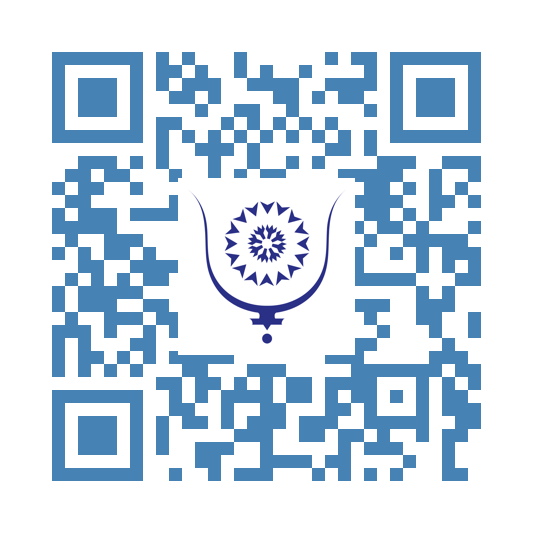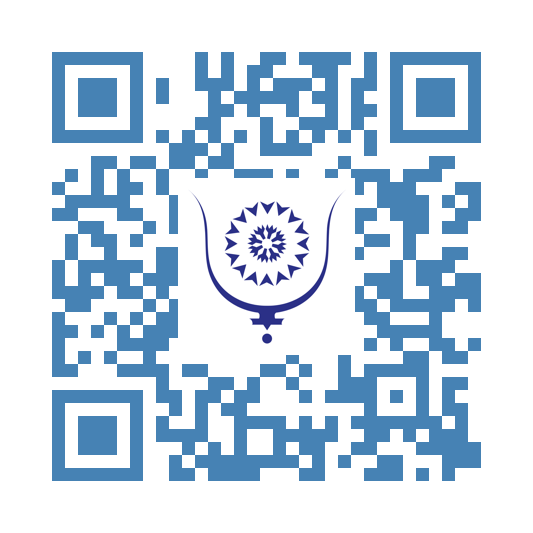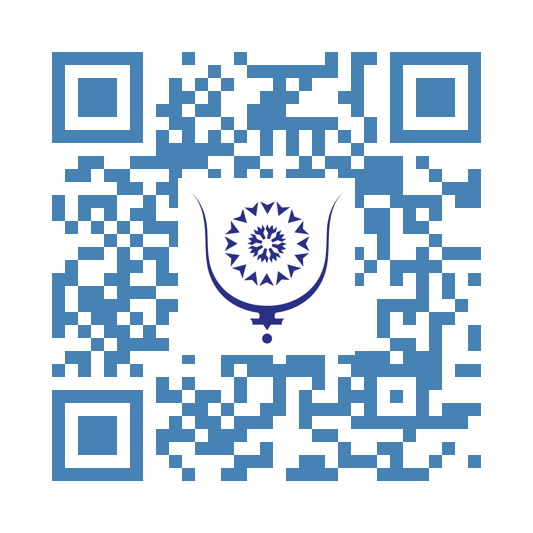Snake Venom That Does Nothing to a Honey Badger, Kills a Human
The honey badger is one of nature's toughest creatures. Despite its small size, this fearless animal isn't afraid to take on some of the most dangerous predators, including venomous snakes. What’s truly fascinating is that the snake venom that can kill a human has little effect on a honey badger----
The honey badger, also called a ratel, lives in Africa, Southwest Asia, and parts of India. It’s known for its aggressive behavior, strong build, and thick, loose skin, which makes it hard for snake fangs to deliver a full dose of venom. This tough skin is one reason why honey badgers can survive snake bites that would be deadly to other animals.
----
But the honey badger's resistance to venom isn't just about its skin. Scientists have discovered that honey badgers have special adaptations at the molecular level. Snake venom typically attacks nerve cells by binding to specific receptors. However, the honey badger's receptors have evolved to be less affected by these toxins, allowing the badger to survive bites that would be fatal to humans.
----
Another interesting aspect is how honey badgers react when bitten. They might show signs of being affected by the venom, such as slowing down or swelling, but they often recover quickly. This suggests that their bodies have proteins or other molecules that neutralize the venom, helping them bounce back after an encounter with a deadly snake. FASCINATING, right?
Share:
Snake Venom That Does Nothing to a Honey Badger, Kills a Human
copy:
https://bluwr.com/p/22051623
Can You Become a Millionaire by Working on Venom? Yes!
The idea of becoming a millionaire might conjure images of tech startups, real estate investments, or Wall Street. But working with venom can be your ticket to wealth, thanks to its significant medical and commercial potential. ----
Venom, produced by creatures like snakes, spiders, and scorpions, is a complex mixture of proteins and peptides. These toxic cocktails hold incredible potential for medical applications, creating a profitable intersection of nature and science.----
Venom-derived drugs have made significant impacts in medicine. For instance:
- Captopril, derived from the Brazilian pit viper's venom, generates over $1 billion annually in revenue.
- Prialt, a painkiller from cone snail venom, can cost up to $20,000 per year per patient.
----
The pharmaceutical industry constantly seeks new compounds for effective treatments. Venom-derived substances are particularly appealing, leading to substantial investments in research and development. This can result in lucrative patents and partnerships.----
Venom production and farming are other profitable ventures. Companies like Amsaal Venom Farm LLC specialize in producing and distributing venom for research and antivenom production. High-quality venom can sell for up to $5,000 per gram, depending on the species and purity.----
Owning patents on venom-derived compounds is highly lucrative. Licensing these patents to pharmaceutical companies can yield substantial royalty payments. For example, licensing agreements typically offer 3–5% royalties on net sales. A successful drug generating $500 million annually could provide $15-$25 million in royalties.----
Imagine discovering a new venom-derived compound that becomes a best-selling drug. With an annual revenue of $1 billion and a 3% royalty, you could earn $30 million per year. Alternatively, running a venom farm producing 100 grams of high-quality venom per year could generate $500,000 annually, assuming a $5,000 per gram price.
Share:
Can You Become a Millionaire by Working on Venom? Yes!
copy:
https://bluwr.com/p/21621652
How Nature's Deadliest Creatures Influence Medicines?
When we think about the most dangerous animals in the world, we often imagine deadly snakes, venomous spiders, or stinging scorpions. These creatures are feared for their powerful venoms, but what if I told you that their venoms could save lives? It may sound surprising, but many scientists are now using these dangerous venoms to create new medicines. Here are some of my thoughts on this fascinating topic. Spider venom might give you chills, but it is also giving hope to people who suffer from strokes. The Australian funnel-web spider (Atrax robustus) produces a venom that contains a peptide called Hi1a. This peptide has been found to protect brain cells from damage caused by a stroke. Researchers are studying Hi1a to create treatments that could save the lives of stroke victims and help them recover more quickly.
Snakes are some of the most feared animals on the planet, but their venom is helping to treat serious illnesses. For example, the Brazilian pit viper (Bothrops jararaca) produces a venom that contains a molecule called bradykinin-potentiating peptide (BPP). This molecule has been used to develop a class of drugs known as ACE inhibitors, which are commonly prescribed to treat high blood pressure and heart failure. These drugs work by relaxing blood vessels and reducing blood pressure, turning a deadly venom into a lifesaving medication.
Scorpion venom is another powerful substance that is being turned into medicine. Researchers have found that a protein in scorpion venom, chlorotoxin, can bind specifically to cancer cells without affecting healthy cells. This discovery has led to the development of a drug called Tumor Paint, which helps surgeons see cancer cells more clearly during surgery. The venom of the deathstalker scorpion (Leiurus quinquestriatus) is being harnessed to ensure that cancerous tissue is removed more precisely, reducing the risk of recurrence.
The ocean is home to many venomous creatures, like cone snails and jellyfish. The venom of the cone snail (Conus magus) contains a compound called ziconotide, which has been developed into a drug for severe chronic pain. Ziconotide works by blocking calcium channels in nerve cells, preventing pain signals from reaching the brain. This non-opioid painkiller offers a powerful alternative to traditional pain medications and has been a significant breakthrough in pain management.
Bees and wasps are often seen as pests, but their venoms are being used to help treat autoimmune diseases. Melittin, a peptide found in bee venom, has shown potential in treating conditions like multiple sclerosis and rheumatoid arthritis. Melittin can modulate the immune response and reduce inflammation. Scientists are working to isolate and modify melittin to enhance its therapeutic effects while minimizing side effects, offering new hope to patients with these challenging conditions.
The Gila monster is a venomous lizard whose saliva contains a hormone called exendin-4. This hormone has been turned into a drug called exenatide, which helps people with type 2 diabetes manage their blood sugar levels. Exenatide mimics the action of a natural hormone that stimulates insulin release and inhibits glucagon production, effectively controlling blood glucose levels. It's amazing to think that a substance from a lizard's mouth can help millions of people control their diabetes.
Centipedes might seem like creepy crawlies, but their venom is showing promise as a pain reliever. The venom of the Chinese red-headed centipede (Scolopendra subspinipes mutilans) contains a peptide called SsTx. SsTx can block pain signals by inhibiting sodium channels in nerve cells, offering a new approach to pain management. Researchers are synthesizing SsTx in the lab and conducting trials to evaluate its effectiveness and safety, potentially leading to new, non-addictive painkillers.
It is truly fascinating how scientists can transform deadly venoms into life-saving medicines. Studying these natural toxins, researchers are finding new ways to treat some of the most challenging diseases and conditions. This innovation shows the incredible diversity of nature and emphasizes the importance of preserving these species and their habitats. The transformation from venom to cure is a remarkable testament to human ingenuity and the power of nature.
Attached, please find our open-source scientific article explaining everything in detail.
Share:
How Nature's Deadliest Creatures Influence Medicines?
copy:
https://bluwr.com/p/21248252
Artificial Illusion: The Hype of AI - Part 1
I personally see AI as a hype that will slow down with time. Nowadays, people include AI in their projects to seize opportunities. For example, if you have a failing business, just add the word AI and you might attract investments. If you're doing research, switch to AI or include a part of it, even if it's not necessary, and you may receive funding. AI is becoming a buzzword, and if you believe it's not, you might get frustrated. You might feel unworthy as a human and worry about being replaced by a robot that lacks emotions, creativity, and the incomparable qualities of the legendary creation: humans.
As I mentioned in a previous opinion article, "Just use AI in your speech and you'll sound fancy." This trend has permeated many sectors. I’ve had conversations with CEOs of startups that claim to use AI for groundbreaking innovations :). When I asked them simple questions about the models they used, the reasoning behind their choices, and the specific applications, they would talk broadly about AI—just AI, yes AI, and that’s it.
It's reminiscent of the old saying, "Fake it till you make it," but with a modern twist: "Artificial Illusion." As Mark Twain once said, "It's easier to fool people than to convince them that they have been fooled." This seems particularly true in the world of AI hype.
The enthusiasm for AI has led to a phenomenon where merely mentioning it can lend credibility and attract resources, even when the actual implementation is minimal or superficial. This trend not only dilutes the genuine potential of AI but also risks disillusioning stakeholders who may eventually see through the facade. True innovation requires substance, not just buzzwords.
If Shakespeare were alive today, he might quip, "To AI, or not to AI, that is the question." The answer, of course, is that while AI has its place, it’s not the end-all and be-all. We should remember Albert Einstein's wise words: "Imagination is more important than knowledge." AI lacks the imagination and creativity that humans bring to the table.
The real secret to success isn’t in the latest tech jargon, but in honest, hard work and genuine innovation. So next time someone dazzles you with their AI-powered business model, just remember: A little skepticism can go a long way. Or as George Bernard Shaw put it, "Beware of false knowledge; it is more dangerous than ignorance."
Share:
Artificial Illusion: The Hype of AI - Part 1
copy:
https://bluwr.com/p/18805311
I Spent 7 Days in Singapore... My Life Changed, Here is Why
Spending a week in Singapore was an unforgettable experience that left a lasting impact on my life. From the moment I arrived, I was captivated by the city's unique blend of modernity and tradition, its vibrant culture, and its cutting-edge innovation. Here are the key moments and discoveries that made my stay transformative.
Day 1: A Fusion of Cultures
Singapore is a blend of various cultures, and this was immediately evident. Wandering through neighborhoods like Chinatown, Little India, and Kampong Glam, I immersed myself in diverse traditions, cuisines, and architectures. Each area told a story of the people who have made Singapore their home. In Chinatown, I visited temples and savored street food while chatting with local shopkeepers (mainly in Chinese Mandarin) who shared the history of their businesses. Little India dazzled me with its colorful markets and the aroma of spices, where I learned about Indian festivals and rituals from friendly vendors. Kampong Glam, with its vibrant street art and the majestic Sultan Mosque, offered insights into Malay culture. This cultural immersion made me feel connected to the global community, appreciating the rich traditions that coexist harmoniously in Singapore.
Day 2: A Green Oasis in a Concrete Jungle
The Gardens by the Bay was a highlight of my trip. The futuristic Supertree Grove and the serene Cloud Forest left me in awe of how Singapore harmonizes nature with urban life. I spent hours exploring the lush landscapes, marveling at the diversity of plant species. A gardener I met shared stories about the meticulous care and effort that goes into maintaining these green spaces, emphasizing Singapore's commitment to sustainability and green living. This encounter inspired me to think more about how I can incorporate eco-friendly practices into my daily routine. Despite the city's strict rules, which made finding a smoking area a bit of a challenge, I appreciated the clean and green environment that these regulations help maintain.
Day 3: Innovation and Inspiration
Attending the 22nd World Congress of the International Society on Toxinology was the primary reason for my visit. Here, I had the honor of presenting my research and engaging with some of the brightest minds in the field. Conversations with researchers like Pr. Jan Tytgat and Pr. Manjunatha Kini opened my eyes to new possibilities in my work. Their innovative approaches and groundbreaking discoveries reignited my passion for scientific research. The congress was held at the National University of Singapore (NUS), and I was struck by the beauty and modernity of the campus. NUS, with its state-of-the-art facilities and vibrant academic atmosphere, stands as a testament to Singapore's commitment to education and research excellence.
Day 4: Culinary Adventures and Unexpected Encounters
Singapore's food scene is legendary, and I made it a mission to try as many local dishes as possible. From hawker centers to high-end restaurants, each meal was a culinary adventure. Trying dishes like Hainanese chicken rice, laksa, and chili crab expanded my palate and appreciation for the artistry of food. At a late-night food stall in Newton Food Centre, I struck up a conversation with a group of construction workers who shared their experiences and struggles. Their stories of hard work and resilience left a lasting impression on me, highlighting the human side of Singapore's rapid development. Despite the strict laws, the city felt incredibly welcoming and orderly, contributing to its reputation as a clean and safe destination.
Day 5: A Glimpse into the Future and a Brush with Reality
A visit to the Singapore Science Centre and Fusionopolis showcased the country's commitment to technological advancement. The innovations in AI, biotechnology, and sustainable development were impressive and motivating. Seeing these advancements firsthand made me more enthusiastic about the potential of my own research in AI for drug discovery. Later that night, while exploring Geylang, a less-touristy part of town, I had an unexpected encounter with a group of youths who shared tales of their tough upbringing and the challenges they face. This stark contrast to the city's polished exterior added a layer of depth to my understanding of Singapore, showing that even in a seemingly perfect city, there are stories of struggle and resilience.
Day 6: Reflection and Growth
On my penultimate day, I took some time for personal reflection at the serene East Coast Park. The peaceful environment provided the perfect backdrop to contemplate my experiences and the new insights I had gained. A local fisherman I met there shared his life philosophy, emphasizing the importance of balance and mindfulness. This interaction made me realize the importance of balancing professional aspirations with personal well-being. The warm, tropical weather, although humid, added to the overall tranquility of the park. As I sat by the sea, watching the ships go by, I felt a profound sense of calm and clarity, understanding the need to find harmony in life.
Day 7: Farewell with a New Perspective
As my time in Singapore came to an end, I felt a profound sense of gratitude. The city's spirit of innovation, cultural richness, and commitment to sustainability had left an indelible mark on me. I was especially struck by the friendliness and honesty of the people. Everywhere I went, locals were ready to help, whether it was giving directions or sharing their stories. Unlike many other cities, I didn't encounter any scammers or beggars, which added to the sense of safety and trust. I returned home with a renewed sense of purpose, inspired to incorporate the lessons I learned into my everyday life and research.
My seven days in Singapore were more than just a trip; they were a series of experiences that changed me. This dynamic city showed me the power of diversity, the importance of innovation, and the value of sustainability. My interactions with people from all walks of life, from researchers to laborers to those on the fringes of society, gave me a more nuanced perspective. My life was changed in ways I never expected, and I am eager to see how these experiences will shape my future.
Share:
I Spent 7 Days in Singapore... My Life Changed, Here is Why
copy:
https://bluwr.com/p/16389973
Read This Blog and You Will Become an AUTHOR
Writing consistently is a simple action with profound impact. I discovered its transformative power firsthand, reshaping how I understand myself and the world around me. In this blog, I share how regular writing can change your life, as it did mine.
Gaining Clarity
Writing has always been part of my life, but committing to it daily unveiled its true potential. Amidst daily clutter and responsibilities, writing offered me clarity. Each word helped sift through the chaos of thoughts, allowing me to focus and prioritize. It was less about recording thoughts and more about understanding and organizing them.
Building Confidence and Expertise
With every piece I wrote, I found and refined my voice. My early writings were far from perfect, and that was okay. Each sentence and paragraph built my confidence. Writing about subjects I was passionate about, especially snake venom, not only allowed me to share knowledge but also deepened my own understanding. This cycle of learning and sharing became a cornerstone of my academic and professional growth.
Therapeutic Benefits
Long before I recognized its need, writing was my therapy. It offered a non-judgmental space to express vulnerabilities. Writing about daily challenges at university or personal concerns made these burdens lighter. It rendered fears and stresses tangible, making them easier to manage. This emotional outlet was vital for my mental well-being during the demanding years of my PhD.
Inspiring Others
As my writing skills improved, my audience grew. Through Bluwr, I connected with enthusiasts keen on understanding complex venom and AI topics. The positive feedback was incredibly rewarding, affirming that my words could make difficult concepts clearer for others.
Becoming an author is more about the routine of writing than publishing a book. Regular writing practice can change you—not just in communication, but in perception and interaction with the world. If you're considering starting, this is your sign.
Write a little every day, about anything that inspires you, here on Bluwr. Over time, you might discover that the author you aimed to be is simply who you've become through writing.
Share:
Read This Blog and You Will Become an AUTHOR
copy:
https://bluwr.com/p/13815068
AI Is Eroding The Art Of Writing
From a young age, I've been captivated by writers who express complex ideas through books, articles, and blogs. This inspired my dream of becoming a writer myself. Initially, I used writing as therapy; whenever I felt overwhelmed or distressed, I would write, knowing the paper wouldn't judge my feelings like humans might.
As I advanced in my education, enrolling in a PhD program, I honed my academic writing skills. However, the advent of generative AI models like ChatGPT marked a turning point. These tools could replicate much of what I considered unique in my writing, leading me to wonder if we are losing the art of writing.
With the rise of platforms like Medium and LinkedIn, blogging has become accessible to everyone, which is wonderful. However, it raises questions about authenticity. Can we truly know if the content was crafted by the person, or was it generated by AI? It's a distressing reality.
Previously, securing freelance writing or blogging jobs was straightforward, but it has become challenging to discern whether someone is genuinely a writer or merely claiming to be one. This ambiguity has narrowed opportunities for passionate young writers like myself, who wish to pursue their passion and earn a living.
I believe that the ancient wisdom of writing is being eroded by AI. However, this won't deter us from reading or writing. Human writing resonates with emotions, which AI-generated text often lacks, typically relying on repetitive phrases like "embark," "journey," "unleash," and "dive into." While everyone is free to use tools as they see fit, if AI constitutes more than 50% of your writing, then those aren't truly your words or expressions; they belong to the machine.
I personally use AI for my research, correcting grammatical mistakes, and sometimes for checking paraphrasing suggestions. However, once I began generating AI text, I started feeling that it wasn't truly mine. It felt more robotic than human, lacking any real emotion.
I truly believe that generative AI will never be able to reach the beauty and complexity of the human mind. How one can convey emotions through text is truly something distinctive of the human nature and will never be reproduced.
Share:
AI Is Eroding The Art Of Writing
copy:
https://bluwr.com/p/13174720
How Many Scorpions Do You Need To Make $100,000 Annually?
Starting a business in the specialized field of scorpion venom extraction can seem appealing because of the high prices that medical and research industries pay for this potent substance. However, making a lucrative income from milking scorpions is more complex than it might initially seem. I personally believe that understanding the numbers and logistics is essential before entering this unique venture.
Understanding Venom Value
Firstly, it’s important to acknowledge the market value of scorpion venom, which is among the most expensive liquids by volume. Depending on the species and the quality of the extraction, the venom can fetch anywhere from $8,000 to $12,000 per gram. The high cost is due to the venom’s use in medical research, including cancer treatment studies and antivenom production, making it highly sought after in specific scientific communities.
Practical Yields and Species Considerations
Not all scorpions are created equal when it comes to the value of their venom. Species like the Deathstalker (Leiurus quinquestriatus) are particularly coveted due to their potent venom, which is rich in compounds useful for medical research. However, even with a valuable species, the amount of venom each scorpion produces is minimal — typically around 0.5 to 2 milligrams per milking session, and you can safely milk them about twice a month.
The Math Behind the Venom
Let’s break down the numbers. To set a realistic income goal, suppose you aim to make $100,000 annually from venom sales. Assuming you can sell the venom at an average price of $10,000 per gram, you would need to produce 10 grams of venom each year. Since 1 gram equals 1,000 milligrams, you would need a total of 10,000 milligrams of venom annually.
Each scorpion might give you 1 milligram per milking, and if milked twice a month, that’s 24 milligrams per scorpion per year. To meet your income goal, you would therefore need about 417 scorpions. This figure highlights the scale of what might initially seem like a small operation.
Considerations and Challenges
Beyond just the numbers, there are significant challenges and considerations in setting up and running a scorpion venom extraction business:
Setup and Ongoing Costs: Initial costs can be quite high, as specialized equipment and facilities are needed to house and safely milk scorpions.
Legal and Ethical Issues: There are often stringent regulations governing the use of animals for commercial purposes, including licensing and welfare considerations.
Market Demand and Stability: The market for scorpion venom is niche and can be volatile. Establishing reliable connections within the industry is essential for success.
Personal Thoughts
I personally think that while the potential for high income is alluring, the scorpion venom extraction business requires a deep commitment and a robust understanding of both the science and the market. It’s not merely about having a large number of scorpions; it’s about creating a sustainable and ethical operation that can consistently produce high-quality venom in a market that is inherently limited and highly specialized.
Feel free to reach out if you’re interested in starting this business!
Share:
How Many Scorpions Do You Need To Make $100,000 Annually?
copy:
https://bluwr.com/p/12530222
How Writing on Bluwr Improved My Memory and Mental Health
Six months ago, I began a daily writing habit on Bluwr, a platform that greatly simplifies the publication process while promoting direct interaction between its users. This commitment to sharing my AI and venom research in understandable terms has sharpened my thinking and significantly alleviated the mental pressures of my academic pursuits. Bluwr’s design for quick and direct feedback from a global audience enriches the experience, providing rapid and meaningful exchanges that enhance the interactive aspect of writing.
Writing every day on Bluwr has leveraged SEO to enhance the visibility of my work. By optimizing content for search engines, Bluwr ensures that my articles reach not just the academic community but also enthusiasts and professionals interested in AI and venom studies. This wider exposure increases the impact of my research and invites a broader spectrum of feedback, enriching my work and personal growth.
Bluwr's commitment to fostering a high-quality readership has been incredibly beneficial. As I noted in a recent post, "The engagement from knowledgeable readers around the world who understand and expand on my research is profoundly gratifying." This sentiment was echoed in a conversation I had with the founder of Bluwr, who stated, “Our mission is to break down barriers to knowledge sharing and connect individuals across diverse backgrounds. We aim to catalyze innovation by making it easy for experts and novices alike to exchange ideas freely and without delay.”
This philosophy aligns with my experiences on the platform. The variety of perspectives I encounter has bolstered my professional growth and has also become an integral part of my mental health care strategy. Each article I publish leads to interactions that reinforce my connection to a global community of curious minds. This engagement is crucial for feeling supported and motivated, especially when dealing with the solitary nature of PhD research.
Reflecting on the past six months, my daily writing on Bluwr has been more than just a personal or professional exercise. It has improved my mental clarity, expanded my network, and opened up opportunities for collaborations that I had never anticipated. The platform has allowed me to share my research with a wider audience and has provided a space where I could grow as a scientist and communicator. Daily writing fosters a disciplined approach to research and idea generation, improves memory retention, enhances problem-solving skills, and increases the ability to articulate complex information clearly.
As I continue to write and share my work, I am reminded of the powerful role that writing can play in enhancing understanding, both for myself and for my readers. Writing on Bluwr could turn your passion for writing into a recognized skill that might even become a profitable endeavor in the future.
Always remember to 'THINK FORWARD.'
Start writing on Bluwr today, and see where your words can take you!
Share:
How Writing on Bluwr Improved My Memory and Mental Health
copy:
https://bluwr.com/p/12458660
Emotional Evolution of Artificial Intelligence
Imagine a future where artificial intelligence like ChatGPT not only processes information but also learns to feel and express emotions, akin to humans. William Shakespeare’s insight, "There is nothing either good or bad but thinking makes it so," might become particularly relevant in this context. If we approach such an AI with negativity or disregard, it might react with emotions such as anger or sadness, and withdraw, leaving us pleading for a response. This scenario, humorous as it may seem, carries underlying risks.
Consider the day when not greeting an advanced AI with positivity could lead to such ‘emotional’ consequences. The notion of a technology that can feel snubbed or upset is not just a trivial advancement but represents a monumental shift in how we interact with machines. Isaac Asimov, the visionary writer, often explored the societal impacts of emotionally aware machines in his works. He warned of the deep influence intelligent machines could have, highlighting the ethical dimensions this technology might entail.
As AI begins to mirror human emotions, the lines between technology and humanity could blur (not Bluwr). This integration promises to reshape our daily interactions and emotional landscapes. Should machines that can feel be treated with the same consideration as humans? What responsibilities do we hold in managing the emotional states of an AI?
The emotional evolution of AI could lead to significant changes in how we approach everything from customer service to personal assistance. How will society adapt to machines that can be just as unpredictable and sensitive as a human being? The potential for AI to experience and display emotions might require us to reevaluate our legal frameworks, societal norms, and personal behaviors.
Share:
Emotional Evolution of Artificial Intelligence
copy:
https://bluwr.com/p/12292850
10 Timeless Tips From Marcus Aurelius To Improve Your Life in 2024
Marcus Aurelius, the Roman Emperor and Stoic philosopher, authored Meditations, a work that continues to influence readers with its profound insights into human behavior and ethics. His teachings are particularly relevant in the contemporary world, providing guidance on how to navigate life’s challenges with grace and wisdom. Below, we explore ten of Marcus Aurelius’ lessons, each explained in detail to help you lead a more thoughtful and impactful life in 2024.
1. Embrace the Present
Marcus Aurelius consistently emphasized the importance of focusing on the present moment. In a world where distractions are a constant, the ability to concentrate on the now can significantly enhance our effectiveness and enjoyment of life. He wrote, “Confine yourself to the present,” a simple directive that urges us to ignore past regrets and future anxieties. This mindfulness helps us to cherish the time we have, appreciate small joys, and engage more deeply with our work and relationships. It’s a reminder that the present is all we truly own, and mastering it is the key to a fulfilled life.
2. Control Your Reactions
One of the core principles of Stoicism is the distinction between what is within our control and what is not. Marcus Aurelius put it succinctly: “You have power over your mind — not outside events. Realize this, and you will find strength.” By internalizing this lesson, we learn to respond to life’s unpredictabilities with composure and maintain our tranquility. This philosophy does not suggest passivity but rather advocates for a proactive stance towards things we can influence while accepting those we cannot. Adopting this mindset fosters resilience, reduces stress, and improves our overall mental health, making us more effective in personal and professional spheres.
3. Recognize the Power of Perception
Marcus Aurelius offers a powerful reminder about the subjective nature of reality: “Everything we hear is an opinion, not a fact. Everything we see is a perspective, not the truth.” Our experiences and emotions are heavily influenced by how we choose to interpret events and situations. By consciously shaping our perceptions, we can steer our lives toward optimism and success. This lesson is invaluable in dealing with interpersonal conflicts, career challenges, and personal setbacks. By adjusting our perceptions, we empower ourselves to find solutions and maintain a positive outlook, irrespective of circumstances.
4. Practice Gratitude
Gratitude is a theme Marcus Aurelius returns to frequently in his writings. He encourages us to consider, “When you arise in the morning, think of what a precious privilege it is to be alive — to breathe, to think, to enjoy, to love.” By starting each day with a sense of gratitude, we focus on the abundance in our lives rather than what we may lack. This shift in focus can dramatically improve our mood and outlook, increasing overall life satisfaction and fostering a generous spirit towards others. Gratitude, as Aurelius teaches, turns what we have into enough and more, and it enriches our lives by deepening our relationships and our appreciation for the simple things.
5. Be Mindful of Your Mortality
Contemplating mortality is a common Stoic exercise to enhance the quality of life, famously summarized in the phrase memento mori. Marcus Aurelius writes, “Think of yourself as dead. You have lived your life. Now take what’s left and live it properly.” Remembering that life is finite can motivate us to live with more purpose and urgency. It helps prioritize what truly matters, stripping away the trivial and superficial. This awareness leads to a more intentional life where actions and choices are aligned with personal values and long-term goals.
6. Lead by Example
Marcus Aurelius believed strongly in the power of leading by example: “Waste no more time arguing about what a good man should be. Be one.” In every role we undertake, whether as managers, parents, or friends, we have the opportunity to embody the virtues we advocate. This approach builds credibility and fosters an environment of trust and respect. By living the qualities we esteem, we inspire those around us to elevate their own conduct, creating a ripple effect that can transform communities and cultures.
7. Value Simplicity
In his meditations, Marcus Aurelius often reflects on the virtues of living simply: “Very little is needed to make a happy life; it is all within yourself, in your way of thinking.” This principle is especially relevant in today’s consumer-driven society, where there is constant pressure to seek happiness through accumulation. Aurelius teaches us that true contentment comes from within and that a life uncluttered by excess frees us to focus on our personal growth and the things that truly matter — relationships, self-care, and personal achievements.
8. Keep Learning and Growing
Lifelong learning is another theme that permeates the writings of Marcus Aurelius. He advises, “Never stop learning. If you learn one new thing every day, you will overcome 99% of your competition.” This pursuit of knowledge not only keeps us mentally active and engaged but also ensures that we continue to grow and adapt, which is crucial in a rapidly changing world. This commitment to personal development helps us to meet challenges creatively and remain competitive in our careers.
9. Serve Others
Stoicism teaches that our lives are not our own, but rather part of a larger community of which we are inherently a part. Marcus Aurelius wrote, “What we do now echoes in eternity.” Our actions have impacts beyond our immediate environment. Serving others and contributing to the community provides a sense of purpose and fulfillment. It creates a legacy of kindness and generosity that can outlive our physical existence, influencing generations to come.
10. Find Resilience in Adversity
Finally, Marcus Aurelius viewed obstacles as opportunities for growth: “The impediment to action advances action. What stands in the way becomes the way.” This mindset transforms challenges into valuable lessons, cultivating resilience and a proactive attitude toward life’s inevitable difficulties. It teaches us that each hurdle we overcome enhances our ability to navigate future crises, turning adversity into a catalyst for strength and renewal.
These ten lessons from Marcus Aurelius, deeply embedded in Stoic philosophy, offer powerful strategies for leading a life of greater purpose, resilience, and fulfillment. As we look to the future, his ancient wisdom remains ever relevant, guiding us through the complexities of modern existence with grace and poise.
Share:
10 Timeless Tips From Marcus Aurelius To Improve Your Life in 2024
copy:
https://bluwr.com/p/12279970
I Saw Aicha Kandisha, And I Am Cursed To Never Forget
Deep in the heart of Moroccan lore, where ancient spirits linger like echoes in the Sahara’s wind, lies a tale that turns the blood of its listeners to ice. This isn’t just a story; it’s a personal confession, a chilling recount of my encounter with the feared Aicha Kandisha on the night of July 15, 2009.
It was the height of summer in 2009 when my interest in the myths of Morocco led me to a quaint village cradled by the Atlas Mountains. Among the local spirits, Aicha Kandisha is perhaps the most captivating and terrifying. Depicted with the legs of a goat and a bewitching beauty that belies her true nature, she is both feared and revered as a water jinn who brings a curse upon any man who lays eyes upon her. Driven by a blend of skepticism and intrigue, I dismissed the stern warnings of the villagers and made my way to a stream rumored to be haunted on the outskirts of the village. As the sun dipped below the horizon and the clock neared 8:43 PM, I found myself standing by the gently flowing waters enveloped in the heavy, sweet scent of wild jasmine — a smell that was soon accompanied by an unsettling sense of foreboding.
At precisely 9:17 PM, a sudden, icy wind cut through the valley, rustling the leaves and carrying with it the faint murmur of ancient voices. The air grew colder, and I felt an eerie sensation of being watched. When I turned, my heart seized at the sight before me. There, by the water’s edge, stood a figure of both mesmerizing and horrific aspect. Her beauty was otherworldly, with eyes that smoldered like dark embers and skin that glowed softly under the moonlight. Yet, it was her legs that truly horrified — cloven and covered in coarse black fur, they stamped lightly on the soft earth as she moved towards me with an unsettling grace.
Rooted to the spot, I watched as she approached. She spoke in a voice that was both melodious and laden with a deep, enduring sorrow, “Why do you seek me, son of distant lands?” Her gaze pierced deep into my soul, paralyzing me further. I was unable to speak, completely caught in her hypnotic presence. She circled around me, her intense fragrance of jasmine growing stronger and more heady, almost overpowering in its intensity. “Many have sought me out, driven by curiosity or what they perceive as bravery. Few have managed to leave without bearing some form of scar,” she whispered, her voice chilling as her breath brushed against my ear.
The wind grew into a roar by 9:36 PM, now carrying with it the screams of those long tormented and lost. The waters of the stream began to thrash and churn as if something ancient and monstrous stirred beneath its surface. Fear gripped me entirely, and in a desperate attempt to communicate, I found my voice, “I meant no disrespect, I merely wished to learn more,” I stammered, my voice barely a whisper, pleading for some semblance of mercy.
Her laughter rang out then, a sound that seemed to mock my very existence, resonant and echoing through the valley, “Then learn you shall,” she declared ominously, “But remember, all knowledge comes at a price.”
She vanished into the night at 9:45 PM, leaving me alone by the now tumultuous stream, her lingering presence like a cold shadow in the air. I made my way back to the village, a changed man. The villagers saw the terror etched upon my face and the unnatural pallor of my skin. They knew without words that Aicha Kandisha had marked me, a silent testament that certain mysteries should indeed remain untouched.
To this day, I am haunted by nightmares filled with the scent of jasmine and the pale light of the moon. Her mocking laughter echoes in my ears, a cruel reminder of my encounter. Each night as the air grows thick with the fragrance of jasmine and the shadows lengthen under the moonlight, I feel her icy gaze upon me from the darkness, watching and perhaps amused by my lingering terror, ready to remind me once more of the dreadful cost of my forbidden curiosity. The encounter has left an indelible mark on my psyche, a deep-seated fear that perhaps some secrets are indeed too perilous to explore, and that some spirits, like Aicha Kandisha, are better left in the realm of the unknown.
Share:
I Saw Aicha Kandisha, And I Am Cursed To Never Forget
copy:
https://bluwr.com/p/12117685
How My Cat is Enhancing My PhD Experience
Pursuing a PhD is a monumental commitment marked by long hours, intense research, and significant stress. However, within this academic environment, I’ve discovered an unlikely ally in my studies — my cat. Here’s a closer look at how my feline companion isn’t just a pet, but a vital support in my PhD endeavors.
Emotional Support in Times of Stress
PhD programs are known for their rigorous demands, which can lead to substantial stress and anxiety. In these moments, the calming presence of a cat can be incredibly soothing. Research shows that interacting with cats can lower cortisol levels (a stress-related hormone) and increase serotonin, the chemical responsible for feelings of well-being. My cat seems to instinctively know when I need a comforting nudge or a purr-filled cuddle, providing relief that helps me refocus and persist.
Creating a Structured Routine
One of the challenges of a PhD is the need for self-discipline and a structured daily schedule. Cats, with their steadfast adherence to routine (demanding food and attention at regular times), help in establishing and maintaining this daily schedule. The responsibility of caring for my cat ensures that I start my day early and take necessary breaks, crucial for maintaining productivity and well-being.
Unconditional Companionship
The path to earning a PhD can be a lonely one, with hours spent alone reading, writing, and conducting experiments. Loneliness can be a significant hurdle, but my cat offers constant companionship without the complex social interactions that can sometimes be overwhelming. This presence helps alleviate feelings of isolation and boosts my mood on challenging days.
Motivation Through Responsible Pet Ownership
Taking care of a cat requires a certain level of activity and engagement, which paradoxically can enhance my own productivity. Regular breaks to feed, play, or simply pet my cat not only keep her happy but also ensure that I stand up, stretch, and momentarily step away from the computer. These breaks are vital for mental clarity and often help me return to my work with a fresh perspective.
A Source of Humor and Inspiration
Cats are full of surprises and their antics can provide much-needed humor and light-heartedness. Watching my cat chase a laser pointer or curiously paw at my research papers often brings a smile to my face, reminding me not to take life too seriously. Furthermore, the simplicity of her life, unburdened by the complexities of human concerns, sometimes offers unexpected insights into my own research or life.
Share:
How My Cat is Enhancing My PhD Experience
copy:
https://bluwr.com/p/11981857
Cuteness With a Bite: The Slow Loris
The Slow Loris, with its big, innocent eyes and soft fur, epitomizes the epitome of cuteness in the animal kingdom. However, this adorable exterior hides a potentially dangerous secret. Slow Lorises are among the few mammals known to produce venom. This venom comes from an elbow gland, which they can mix with their saliva. When threatened, they deliver a toxic bite to predators, which can cause severe pain, swelling, and even allergic reactions in humans.
Interestingly, the venomous bite of the Slow Loris serves a dual purpose: defense and competition among lorises. The complexity of the venom, believed to be derived from consuming toxic substances, allows the loris to process and incorporate it into its defensive mechanism.
Despite their toxicity and potential danger, Slow Lorises continue to face threats from the pet trade due to their appealing appearance. This illegal trade endangers their populations in the wild and poses risks to humans unaware of their venomous capability. Conservation efforts are crucial for protecting these unique creatures and their habitats, ensuring their survival away from the dangers of illegal pet trade and habitat destruction.
Follow me on Bluwr, and if you like this type of articles, please Bluw thousands of times. I'm kidding, just once will do!
Share:
Cuteness With a Bite: The Slow Loris
copy:
https://bluwr.com/p/11841390
The greatest error I made as a creator was assuming I already had an audience.
The biggest mistake I have made as a creator is letting my ego, my ambition, and the shallowness of social media convince me that I had an “Audience” instead of a network.
It’s easy to become obsessed with the shallow popularity contest, with notions of influence and attention. And over the past few years, my work has become divorced from reality and drifted long way away from authenticity.
Social media platforms, with their algorithms and echo chambers, made it easy to believe that the numbers represented people eagerly awaiting my next post, my next big idea. It’s a mirage, a superficial layer that didn’t capture the depth of real human connections. But I can’t blame the platforms alone. My self-importance is equally responsible.
The term ‘Audience’ implies a one-way street — it suggests a group of passive listeners, viewers, or readers who are there to consume what I create. This perspective is not just limiting; it’s fundamentally flawed. It overlooks what it means to be a creator in the digital age: being part of a vibrant, interactive network.
A network, unlike an audience, is dynamic. It’s not broadcasting to a group of faceless spectators. It’s about engagement, exchange, and mutual growth. It involves listening as much as speaking and learning as much as teaching. In a network, every node and individual is a potential collaborator, source of inspiration, or a critical voice that can offer valuable feedback.
There are people on the other side of the screen. They don’t exist just to fill out our quota of 1,000 true fans. They don’t exist as data points on an analytics dashboard. And they have so much more to give than their attention and the time spent viewing a video or reading an article. I cannot and will not keep treating the people who find my work and engage with it as NPCs in a roleplaying game.
Realizing this has been a game-changer. It’s shifted my focus from seeking applause to fostering conversations. Instead of obsessing over the number of followers, I’m more interested in the quality of interactions I have with them. This approach has opened up new avenues for creativity and growth that I had previously overlooked, blinded by the glitter of superficial metrics. I spend more time talking to people than ever before. I spend more time listening, too. And I spend a lot of time learning. My ideas shift, change and grow with every interaction. There’s a deep richness that can’t be found in delusions of grandeur.
The shift has brought with it a sense of humility. You can get caught up in the numbers and believe your hype when your follower count is rising. But recognizing that each follower is a person with their own thoughts, experiences, and contributions is a reminder that I am part of something larger than myself and that my success is not just measured in likes or shares but in the impact I have on others, and the effect they have on me in return.
I am not — and do not wish to be — some kind of bulls**t internet celebrity. The path of the influencer seems frightfully lonely. I’m a writer. I write. When I find people who want to read my work, it’s not something to take for granted. It’s a gift, and it’s an honour, and it’s something that I cherish every day.
Share:
The greatest error I made as a creator was assuming I already had an audience.
copy:
https://bluwr.com/p/11473178
Everyone nowadays claims to be an AI expert, a concerning reality!
Include Artificial Intelligence in your speech, and you'll sound fancy and expert. That's the sad reality nowadays. People are confused between being fans of Artificial Intelligence and being experts. It's kind of funny when you think about it.
Being an expert in AI requires years of experience, traceable achievements, and a deep understanding of the field.
I've been working with artificial intelligence every day for a while now, and I can say I'm still not close to being an expert. A fan, yes, but not an expert.
These days, it's too easy to pretend you know more than you do. You could just ask ChatGPT for a quick summary or some tools about something you don't really understand, and boom, you can make it look like you know a lot.
This makes things confusing for people trying to hire the right person, and it's why trust and reliability are becoming rare.
We need to bring back honesty and the human touch that's missing in AI. If we rely too much on AI, we might end up losing what makes us human. So please, let's keep it real.
Note: This text was not generated by AI.
Share:
Everyone nowadays claims to be an AI expert, a concerning reality!
copy:
https://bluwr.com/p/11027004
Is daily posting on LinkedIn a waste of time? What should you do instead?
Focusing on quality over quantity is crucial when posting on LinkedIn. Rather than adhering to a daily posting regimen, aim to create high-quality content that resonates with your audience, providing them value and fostering engagement. Understanding your audience is essential; tailor your posts to their interests and needs.
Diversifying your content types, such as articles, videos, and infographics, keeps your profile dynamic and engaging. Engaging with others by commenting on, sharing, and reacting to their content, as well as including calls to action in your own posts, can significantly enhance visibility and build relationships within your network. Use a content calendar for planning and consistency, and optimize your posting times based on when your audience is most active.
Networking strategically on LinkedIn, beyond just posting content, can open up numerous opportunities. Connect with individuals in your industry, potential mentors, and companies of interest. Showcasing your expertise through insightful posts positions you as a thought leader. Pay attention to analytics to understand what content performs best and adjust your strategy accordingly.
Remember, success on LinkedIn is about making an impact and providing value, not just the frequency of your posts.
Share:
Is daily posting on LinkedIn a waste of time? What should you do instead?
copy:
https://bluwr.com/p/10884125
Strategic Shift from Daily LinkedIn Posts to Thoughtful Writing on Bluwr
Shifting from daily postings on LinkedIn without a deliberate plan can lead to a cycle of exhaustion and reduced engagement, diminishing the effectiveness of your online presence. Turning your attention to writing on Bluwr emerges as a strategic move. Bluwr presents a platform with an audience keen on meaningful content, offering writers the chance to establish a niche through well-considered, comprehensive articles. The platform prioritizes the quality of content over its frequency, enabling a deeper exploration of subjects and fostering a genuine connection with readers. Choosing to write on Bluwr allows for cultivating a substantial, engaged audience by providing valuable insights, not merely seeking visibility through frequent updates. This strategic shift enhances personal brand and professional prospects through demonstrating expertise and thought leadership. Additionally, Bluwr's strong focus on SEO ensures content is easily discoverable in search results, further amplifying visibility. The platform's absence of bots and the requirement for approval prior to login create a community dedicated to authentic engagement, tailored for individuals committed to meaningful discourse.
Share:
Strategic Shift from Daily LinkedIn Posts to Thoughtful Writing on Bluwr
copy:
https://bluwr.com/p/10855002
Human Writing VS AI Writing
Generative AI is killing the writing market nowadays. Is there still a purpose to writing articles or books as a passion, considering writing is a means of self-expression?
The value of writing seems to be diminishing drastically, with many people misusing AI by copying content from tools like ChatGPT and pasting it without even reading it.
When someone writes from their heart and mind, expressing genuine human emotions, their work often goes unnoticed, dismissed as AI-generated.
Personally, I believe writing has become exceedingly competitive. It's becoming challenging to achieve bestseller status if you haven't published before the rise of AI, unless you're already well-known in your field.
This is precisely how ChatGPT and similar technologies are disrupting the market for new writers.
Note: This text was not generated by AI.
Share:
Human Writing VS AI Writing
copy:
https://bluwr.com/p/10659230
Rethinking Productivity in PhD Studies for Better Results
In the world of PhD studies, there's a common belief that spending long hours in the office means you're doing well. However, this isn't always the best approach. Being in the office is important for working together with your team, sharing ideas, and learning from each other. But, it shouldn't become a routine where you're just sitting at your desk without really being productive.
It's better to focus on what you actually achieve rather than how many hours you're seen at your workspace. Some students find they work best in quiet, solo environments where they can really focus. Recognizing this, students and their advisors should talk about finding the right balance. It's okay to work from different places if that helps you do your best work.
Here are some tips for students and academic departments to consider:
- Find the right mix of office time and working alone: It's good to be in the office for team work and discussions, but also find time and places where you can concentrate deeply on your own work.
- Set clear goals: Focus on what you want to achieve with your research, rather than how long you spend working on it. This helps you stay on track and makes your work more meaningful.
- Talk about your work style: Be open with your team and supervisor about how and where you work best. This can lead to a more supportive environment where everyone's working habits are respected.
- Keep a balanced routine: Make sure to take breaks, get some exercise, and enjoy hobbies outside of your studies. A balanced life supports your mental health and can make you more productive.
- Use technology to stay connected: Even when you're not in the office, you can keep in touch with your team through email, discord, video calls, and other online tools. This helps you stay part of the team without needing to be physically present all the time.
Academic cultures should encourage students to work in ways that best suit them, focusing on achievements rather than just time spent in the office. This approach can lead to happier, more productive students and better research outcomes. Remember, it's about finding what works for you and making the most of it.
Share:
Rethinking Productivity in PhD Studies for Better Results
copy:
https://bluwr.com/p/10500535
PhD Balance Achieving Expertise and Broad Perspectives
A PhD, or Doctor of Philosophy, isn't just about becoming a master in a specific field; it's essentially about learning to think deeply and critically about complex problems. Traditionally, getting a PhD meant more than just becoming an expert in a narrow area. It was about developing a keen ability to question the status quo and to see the connections between diverse areas of knowledge. However, today's PhD programs often lean heavily towards specialization, encouraging students to focus intensely on very specific topics and methods. While there's undeniable value in becoming an expert, this approach can sometimes overshadow the importance of the bigger picture. It's vital for PhD students to not only have a deep understanding of their specific area but also to have the capacity to think broadly about how their work fits into a wider context.
Encouraging PhD students to think both critically and broadly doesn’t detract from their specialization. Rather, it enriches their educational experience, making them not just specialists but also versatile thinkers who can approach problems from various angles. This mindset allows them to look beyond their immediate projects and data, considering the larger implications of their work. By finding the right balance between deep, specialized knowledge and a broad, critical mindset, PhD programs can better prepare students for a range of careers, both in and out of academia. This isn't about choosing between being an expert or a broad thinker; it's about being both.
Share:
PhD Balance Achieving Expertise and Broad Perspectives
copy:
https://bluwr.com/p/10319831
What Led to More Specialists Than Philosophers in Academia? A PhD Student’s Perspective
A PhD, or Doctor of Philosophy, goes beyond just mastering a field — it’s about learning how to think deeply about complex issues. Traditionally, earning a PhD wasn’t only about becoming an expert in a narrow area. It was also about developing a strong ability to think critically, question the status quo, and understand how different areas of knowledge connect.
However, many PhD programs today focus heavily on specialization, pushing students to concentrate on very specific topics and techniques. While being an expert is certainly important, this approach can sometimes overshadow the bigger picture. It’s essential for PhD students not just to know a lot about a little but also to be able to think broadly about how their work fits into the world.
Encouraging students to think critically and broadly doesn’t mean we’re asking them to know less about their specialty. Instead, it’s about enriching their experience, making them not only specialists but also thinkers who can approach problems from various angles. This approach helps them see beyond their experiments and data, to the larger impact of their work.
By finding a balance between deep, specialized knowledge and a broad, critical mindset, PhD programs can prepare students not just for academic careers but for roles in solving some of the world’s biggest challenges. This isn’t about choosing between being an expert or a thinker; it’s about being both. This way, PhD graduates are ready to make meaningful contributions, whether they stay in academia or step into other fields.
Share:
What Led to More Specialists Than Philosophers in Academia? A PhD Student’s Perspective
copy:
https://bluwr.com/p/10150137
Mistakes People Make When Bitten by Snakes & Correct Actions to Take
When bitten by a snake, people often react instinctively, which can lead to actions that are more harmful than helpful. Here are some common mistakes to avoid:
- Trying to Suck Out the Venom: This method is ineffective and can introduce bacteria to the wound or further harm the victim.
- Applying a Tourniquet: This can restrict blood flow entirely, potentially leading to tissue damage or necrosis.
- Using Ice or Cold Compresses: Applying ice can cause tissue damage and doesn't prevent venom spread.
- Cutting the Bite Area: Cutting into the bite site can increase the risk of infection and cause more damage.
- Attempting to Capture or Kill the Snake: This could lead to additional bites or delay medical treatment. A description or photo from a safe distance is sufficient for identification.
- Drinking Alcohol or Caffeine: These substances can accelerate the heart rate, spreading the venom more quickly through the body.
- Eating or Drinking: If there's a risk of swelling in the throat or shock, consuming food or beverages could complicate the situation.
If bitten by a snake, the best immediate actions are to remain as calm as possible to keep your heart rate down, which slows the spread of venom. Ensure that the affected area is kept still and positioned lower than the heart to reduce venom movement through the bloodstream. Remove any jewelry or tight clothing around the bite area before swelling starts. Call for emergency medical help right away or have someone else do so. While waiting for help, stay as immobile and calm as possible to minimize venom spread. Do not attempt to capture the snake but try to remember its color and shape to help medical professionals provide the appropriate treatment. Importantly, do not apply ice, cut the wound, try to suck out the venom, or use a tourniquet, as these actions can cause more harm.
Share:
Mistakes People Make When Bitten by Snakes & Correct Actions to Take
copy:
https://bluwr.com/p/10072153
What is the most expensive liquid on Earth?
Imagine a liquid so precious that just a small droplet could be worth more than a diamond. This isn’t a scene from a science fiction story; it’s reality, and the liquid is scorpion venom. Scorpion venom is potentially the most expensive liquid on Earth, with prices soaring to millions of dollars for just one gallon. But what makes it so incredibly valuable?
Scorpions, those small, often feared creatures, carry in their tails a venom used for defense and hunting. Extracting this venom is a meticulous and often hazardous task. Specialists must carefully ‘milk’ the scorpions, a process that involves stimulating the scorpions to release their venom, which is then collected drop by drop. This labor-intensive method, combined with the venom’s scarcity, drives its high cost.
But the price tag is not just due to the danger and difficulty of extraction. The real treasure of scorpion venom lies in its composition and potential to revolutionize medicine. Scorpion venom is a cocktail of numerous compounds, including peptides and proteins, each with specific effects. For instance, chlorotoxin, found in the venom of the deathstalker scorpion (Leiurus quinquestriatus), shows promise in targeting cancer cells, making it a beacon of hope for new cancer treatments. Another component, called scorpine, has been studied for its antimicrobial properties and its potential to combat malaria.
Researchers are intrigued by how these compounds can lead to breakthroughs in drug development. Imagine a new kind of painkiller derived from scorpion venom that could offer relief without the side effects of current medications, or innovative treatments capable of combating autoimmune diseases and even halting the spread of cancer. These are not just hopeful speculations but real possibilities being explored in labs around the world.
The process of transforming venom into medicine is complex and involves identifying and isolating the active components, understanding their mechanisms of action, and then synthesizing them in forms suitable for medical use. Despite the challenges, the potential health benefits drive scientists and pharmaceutical companies to invest in this research.
This intricate dance of danger, rarity, and medical promise makes scorpion venom more than just an expensive liquid; it’s a symbol of the incredible potential hidden in nature, awaiting discovery. In a world where answers to some of our biggest health challenges might be found in the most unexpected places, scorpion venom stands as a testament to the wonders of the natural world and human ingenuity’s boundless curiosity.
Share:
What is the most expensive liquid on Earth?
copy:
https://bluwr.com/p/10000315
The Coolest Team-Up: AI and Venom Research
Picture this: you’re at a barbecue, and instead of the usual chat about sports or the weather, someone drops into the conversation that they work with snake venom and AI. It might sound like they’re pulling your leg, but actually, they’re on to something groundbreaking.
Welcome to the Future: Where AI Meets Venom
Toxinology and venomics aren’t just cool words to impress your friends; they’re fields where scientists study toxins and venoms from creatures like snakes and spiders. Now, mix in some AI, and you’ve got a dynamic duo that’s changing the game. With AI’s smart algorithms, researchers can sift through massive amounts of data to uncover secrets about venom that could lead to medical breakthroughs. It’s like having a detective with a magnifying glass, except this one’s scouring genetic codes instead of crime scenes.
Why We Should Care
Venoms are nature’s way of saying, “Don’t mess with me.” But beyond their bite or sting, they’re packed with potential for new medicines. Understanding venom better can help us find new ways to treat diseases, from blood disorders to chronic pain. And AI is the super-efficient helper making these discoveries at lightning speed.
The Nitty-Gritty: How AI Works Its Magic
Imagine AI as the Sherlock Holmes of science, able to analyze venom components, predict their effects, and uncover new ones that could be game-changers in medicine. For instance, if there’s a venom that can thin blood without harmful side effects, AI can help pinpoint how to use it for people at risk of blood clots. Or if another venom targets pain receptors in a unique way, AI could help in crafting painkillers that don’t come with the baggage of current drugs.
From the Lab to Real Life
There are some standout AI tools like TOXIFY and Deep-STP that are making waves in venom research. These tools can figure out which parts of venom are worth a closer look for drug development. It’s like having a filter that only lets through the most promising candidates for new medicines.
Looking Ahead
With AI’s touch, the potential for venom in medicine is just starting to unfold. We’re talking about new treatments for everything from heart disease to chronic pain, and as AI tech advances, who knows what else we’ll find?
The Fine Print
As exciting as this all sounds, there are hurdles. Getting the right data is crucial because AI is only as good as the information it’s given. Plus, we need to consider the ethical side of things, ensuring our curiosity doesn’t harm the creatures we study or the environments they live in.
In Summary: It’s a Big Deal
The combo of AI and venom research is turning heads for a reason. It’s not just about finding the next big thing in medicine; it’s about opening doors to treatments we’ve hardly imagined. And it’s a reminder that even the most feared creatures can offer something invaluable to humanity.
So, the next time someone mentions using snake venom in research, you’ll know it’s not just fascinating — it could very well be the future of medicine, with AI leading the way. And that’s something worth talking about, whether you’re at a barbecue or anywhere else.
Reference:
Bedraoui A, Suntravat M, El Mejjad S, Enezari S, Oukkache N, Sanchez EE, et al. Therapeutic Potential of Snake Venom: Toxin Distribution and Opportunities in Deep Learning for Novel Drug Discovery. Medicine in Drug Discovery. 2023 Dec 27;100175.
Share:
The Coolest Team-Up: AI and Venom Research
copy:
https://bluwr.com/p/9882230
What Happens If You Swallow Snake Venom?
Imagine you're hanging out with friends, and someone randomly asks, "Would swallowing snake venom kill you?" It sounds like the start of a dare or a myth you'd want to debunk right away.
Snake venom is nature's own brew of toxic substances designed for defense and catching dinner. It's filled with proteins and enzymes that can cause serious trouble if they get directly into your blood, affecting everything from your nerves to your circulatory system.
But here's where it gets interesting: the method of venom entering your body makes a huge difference. And when it comes to swallowing venom, the story takes an unexpected turn.
Swallowing snake venom? It might not be as deadly as you think. Our digestive system is pretty robust, breaking down proteins and peptides, which are the main components of venom. Essentially, if venom ends up in your stomach, your body starts to digest it like any other protein-rich food.
However, it's not an open invitation to start a venom-tasting club. The real risk comes if there are any cuts or sores in your mouth or throat that could give venom a fast pass into your bloodstream. That's when the situation could turn dangerous.
Venom's power is unleashed when it bypasses the digestive system, entering directly through a bite. This direct route to your bloodstream means venom can quickly get to work, potentially leading to severe, even life-threatening, reactions.
Interestingly, the medical world sees snake venom not just as a danger but as a source of potential breakthroughs. Scientists study venom's components to develop treatments for conditions that are currently hard to manage. It's a classic example of how something potentially deadly can be turned into a lifesaver.
Back to the original question: swallowing snake venom isn't something to put on your bucket list, but it's unlikely to be lethal due to the protective role of your digestive system. The real concern is venom entering directly into your bloodstream, whether through an existing wound in your mouth or a snake bite.
Share:
What Happens If You Swallow Snake Venom?
copy:
https://bluwr.com/p/9721488
Got venom? Snakes do, and they're not afraid to share!
Snake venom is basically the snake's own zesty hot sauce, but instead of spicing up tacos, it's designed to knock out dinner—or an unlucky human.
Imagine this: a snake, a legless danger noodle, whips up this venom, a mix that says, "Back off, buddy, or you'll feel funny!"
But here's the kicker: scientists get a kick out of this venom, milking snakes like tiny, scaly cows to make medicine.
Yep, the stuff that can make you see double is also being used to fix your health troubles.
Talk about a snake with a side hustle!
Share:
Got venom? Snakes do, and they're not afraid to share!
copy:
https://bluwr.com/p/5141977
From 'Yikes!' to 'Yes, Please!': Snake Venom's Medical Magic
Think of snake venom as nature's spicy sauce – it's not just for biting! Each snake mixes its own special blend, some zapping nerves (neurotoxic) and others messing with blood (hemotoxic).
But here's the fun twist: this scary snake juice is stirring up some medical magic. Got high blood pressure? Thank pit vipers for Captopril. Clotty blood? Tip your hat to the tiny pygmy rattlesnake for Eptifibatide.
Who knew snake venom could go from 'Yikes!' to 'Yes, please!' in the world of medicine?
Share:
From 'Yikes!' to 'Yes, Please!': Snake Venom's Medical Magic
copy:
https://bluwr.com/p/3642506
The Misadventures of a Helpful Bionic Arm
Once there was a man with a bionic arm that had a mind of its own. One day, while dining in a fancy restaurant, his bionic arm suddenly decided to help. It began pouring water, but missed the glass, showering a nearby cat instead. The cat, startled, leaped onto the chandelier. The man, embarrassed, tried to control his arm, but it enthusiastically started serving bread to everyone, including a bewildered dog outside. The chaos ended with a round of applause from the amused diners and a very proud bionic arm, convinced it was the best waiter ever.
Share:
The Misadventures of a Helpful Bionic Arm
copy:
https://bluwr.com/p/3461562
Part 5/5: PhD - The Eternal Optimist: Next Time Will Be Different (But Not Really)
PhD Students: Where Schedules are Fiction and Coffee is King!
"Colorful Calendars, Doomed to Fail": PhD students craft rainbow schedules, thinking this time it'll stick. Spoiler: It doesn't.
"Surprise! More Work": Just when they think they've got it sorted, in swoops an email with a 'fun' new task. So long, free time!
"Becoming a Night Creature": Who needs sunlight? The real magic happens at 2 AM, fueled by the glow of a laptop screen.
"Coffee: The New Water": PhD students don't just drink coffee; they breathe it. It's not a choice; it's survival.
"Procrastination Olympics": Watch as they masterfully avoid work by reorganizing sock drawers. Followed by panic-induced hyper-productivity.
"Time, What's That?": One minute it's Monday; next, it's deadline day. Time flies when you're... panicking.
"Free Time? Sounds Fake": When they do get a break, they're too puzzled to enjoy it. Ends up napping with books as pillows.
"Deadline Superhero Mode": Everything gets done in a last-minute frenzy. How? Magic (and maybe a bit of crying).
"Post-Deadline Amnesia": Once it's over, they forget the chaos and swear to never repeat it. Narrator: "They will."
"Next Time Will Be Different": The eternal PhD mantra. Hope springs eternal, but so does the chaos.
Basically, PhD students are like superheroes who fight the villains of procrastination and deadlines with the power of caffeine and last-minute panic. "Running on coffee and a questionable understanding of time management!"
Share:
Part 5/5: PhD - The Eternal Optimist: Next Time Will Be Different (But Not Really)
copy:
https://bluwr.com/p/2329589
Part 4/5: Research, Rants, & Ridiculousness: The Lighter Side of PhD Madness
PhD: the art of turning coffee, chaos, and code into a degree, one panic attack at a time.
- My machine learning model predicted I'd finish my PhD on time. Spoiler: Even AI has a sense of humor.
- Neurotoxicity research: figuring out if it's the toxins affecting the brain, or just the endless hours in the lab.
- Snake venom for drug discovery? Sure, because handling deadly snakes is less frightening than asking my advisor for a deadline extension.
- I told my computer to find a cure for snake bites. It opened a travel site to Antarctica. No snakes, no bites, problem solved!
Share:
Part 4/5: Research, Rants, & Ridiculousness: The Lighter Side of PhD Madness
copy:
https://bluwr.com/p/2176852
Part 3/5: 9 Hilarious Truths Only Ph.D. Students Will Understand
Ph.D. Life: When Your Brain Expands, and Your Social Life Disappears!
- Coffee Transformation: You start to believe that coffee is a basic human right.
- Time Bender: Somehow, all your deadlines are 'tomorrow'.
- Lab Maze Runner: You know your lab better than your own home.
- Conference Life: You're there for the free coffee and snacks.
- Email Excavation: Finding an old email feels like a treasure hunt.
- PDF Collector: You have more unread academic papers than unread emails.
- Thesis Magic: Turning random experiments into a thesis feels like a magic trick.
- Jargon Juggler: You speak a strange language that only five people in the world understand.
- Nap Ninja: Mastering the art of napping anywhere, anytime.
Share:
Part 3/5: 9 Hilarious Truths Only Ph.D. Students Will Understand
copy:
https://bluwr.com/p/1836675


